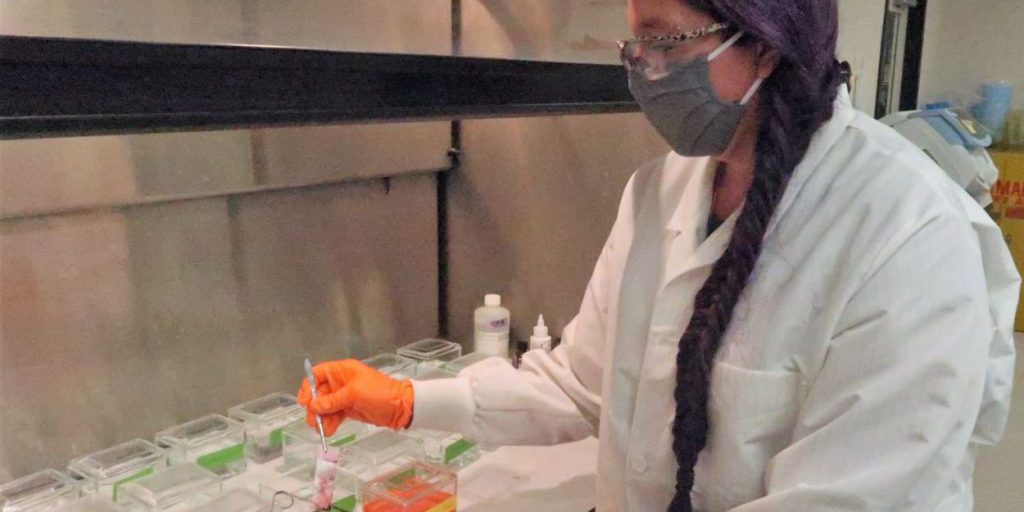Aberdeen Proving Ground, MD – The U.S. Army Combat Capabilities Development Command Chemical Biological Center (DEVCOM CBC) is internally funding five new artificial intelligence/machine learning (AI/ML) seed projects this year. These projects all have the potential to assist the Center and its partners in the development of new technologies for the Warfighter.
“The purpose of the small projects is to generate quick wins for getting better technology into the hands of the Warfighter. But they also provide an opportunity for our researchers to educate themselves on how to structure and process data using AI/ML techniques,” said Patrick Riley, a Center research chemist who is heading up the effort. “Ultimately, we want to establish AI/ML as a routine part of Center researchers’ skill set to ensure that the technologies we develop for the Warfighter flow from the best research and design possible.”
For example, Center researchers have been designing a type of molecule called a metal-organic framework (MOF) for years now. They use a system of molecular struts and nodes to trap and then neutralize chemical agents as they enter its internal spaces. “We are continually working to develop metal-organic frameworks with improved ability for decontaminating toxic chemicals by modifying their physical and chemical properties,” said Matt Browe, a Center chemical engineer who is on a team that received one of the five seed project awards, which averaged $16,000 this year. “Machine learning holds the potential for identifying correlations between different physical and chemical properties of MOFs and how well they perform particular reactions. This helps in designing better experiments for future efforts and largely avoids the trial-and-error approach to developing better materials that is often used in purely experimental efforts.”


